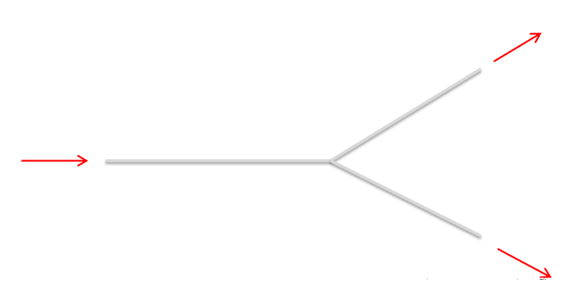PON is the main technology adopted for optical fiber broadband access. PON is not only still the main technology for optical fiber broadband access, but also gradually penetrates into private networks, local area networks, and intra-home networking. For example, the recently popular FTTR uses PON technology.
It usually takes less than ten years for telecommunication technology to become history from the large-scale application, while the application of PON technology has been more than 10 years and is still heady.
1. What is PON passive optical network?
PON passive optical network consists of OLT optical line terminal, ODN optical distribution network, and ONU optical network unit.

OLT is the central office equipment. The client equipment includes ONT and ONU. ONT is an optical network terminal, usually used by a single user, also commonly known as modem. FTTO and FTTH user terminals belong to ONT. ONUs are usually shared by multiple users and are mainly used in FTTB. The customer premises equipment may also be collectively referred to as ONUs.
ODN refers to a passive optical distribution network composed of access optical cable lines and optical splitters between OLT and ONU.
PON is the abbreviation of Passive Optical Network. PON technology simultaneously accesses multiple users through a single fiber. Before the emergence of PON technology, if other optical access technologies want to achieve the same function, active convergence equipment is required in ODN. The PON technology replaces the active convergence device with a passive optical splitter. There is no active device in the ODN, so this technology is called a passive optical network. That is, passive optical network means that the ODN part is passive.
More info at: What is ONU, ONT, SFU, HGU and the differences between them
2. Optical splitter
Optical splitter is a key device in PON. It is a passive device based on optical power splitting, which can divide one optical signal into multiple channels.

The figure above shows a 1×2 splitter. When one optical signal goes in, it is divided into two identical signals, and the optical power of the split signal is only half of the original signal. The 1×2 splitter is cascaded once to become 1×4, and then cascaded again to become 1×8…, the split ratio of our commonly used optical splitters is 1×4, 1× 8, 1×16…. In FTTR, a 1×5 optical splitter with unequal splitting is also used.

According to the different connection methods, the splitter is mainly divided into two types: box type and plug-in type. The box splitter is also called pigtail type, which is mainly used in the optical cable junction box; the plug-in splitter is also called the connector type, which is mainly used in the optical cable splitter box.

The splitting ratio of the splitter increases by 1 level, and the insertion loss increases by about 3dB. For a splitter with the same splitting ratio, the insertion loss of the plug-in type is about 0.2dB larger than that of the box type.
3. The technical principle of PON
The downstream of the PON (from the OLT to the user) uses the broadcast mode. The optical splitter broadcasts the downstream optical signal to each ONU connected to the same splitter. Each ONU receives its own signal and discards the signal that does not belong to itself.
The uplink of the PON adopts the time division multiplexing (TDM) method, and each ONU communicates with the OLT in a different time slot.
The upstream and downstream of the PON use different wavelengths, and the OLT and ONU use an optical transceiver that integrates optical transceivers, so that different wavelengths are transmitted in one optical fiber.
4. Differences between different PON technologies
Currently used PON technologies mainly include EPON and GPON, as well as 10G-EPON and XG-PON. Although the difference between different PON technologies is great, from the perspective of users, the main differences are in line rate, available bandwidth, and working wavelength.
technology | EPON | GPON | 10G-EPON | XG-PON | XGS-PON | ||
10G/1G-EPON(asymmetrical) | 10G/10G-EPON(symmetry) | ||||||
technical standard | YD/T 1475 | YD/T 1949 | YD/T 2274 | YD/T 2402 | YD/t 3691 | ||
line rate | downstream | 1250 | 24800 | 10312.5 | 10312.5 | 9953 | 9953 |
(Mbps) | upstream | 1250 | 1244 | 1250 | 10312.5 | 2488 | 9953 |
| available broadband | downstream | 950 | 2200 | 8300 | 8300 | 8500 | 8500 |
| (Mbps) | upstream | 900 | 1000 | 900 | 8000 | 2000 | 8500 |
working center wavelength | downstream | 1490 | 1577 | 1577 | |||
| (nm) | upstream | 1310 | 1310 | 1270 | |||
Bonelinks provides PLC splitter, contact us ([email protected]) if needed.




